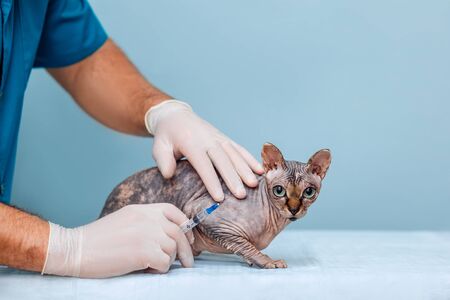Understanding Your Small Pet’s Skin and Coat
If you share your home with small pets like rabbits, guinea pigs, hamsters, or ferrets, you know how unique each species can be—right down to their fur and skin. Rabbits often have soft, dense fur that can range from short to long, while guinea pigs sport coarse or silky coats that may be straight or curly. Hamsters typically have fine, short fur, but certain breeds like the Syrian hamster can grow longer hair. Ferrets, on the other hand, possess a sleek coat and delicate skin underneath. Each type of fur and skin comes with its own set of care needs and potential challenges.
Healthy skin and a glossy coat are more than just a sign your pet looks good—they’re key indicators of overall wellbeing. When your furry friend’s skin is supple and their coat shines, it means they’re getting the right nutrition, living in a clean environment, and are free from stress or illness. Dull fur, flaky skin, or excessive shedding can signal underlying health issues that need attention. As a loving pet parent in the US, keeping an eye on these details helps you catch problems early so your companion stays happy and comfortable.
2. Recognizing Signs of Skin Issues and Parasites
If you’re raising small pets like rabbits, guinea pigs, or hamsters on your homestead, keeping a watchful eye on their skin and coat is essential for their health and happiness. Early recognition of skin problems or unwelcome parasites can make all the difference in getting ahead of any issues. Here’s how you can spot trouble before it takes hold.
Visible Symptoms of Skin Conditions
Healthy fur should be smooth, shiny, and free from bald patches or flakes. If you notice any changes in your pet’s coat or skin, it’s time to take a closer look. Here are some telltale signs that something may be amiss:
| Symptom | Description |
|---|---|
| Dryness | Skin appears flaky or feels rough to the touch; fur might look dull. |
| Redness | Patches of inflamed skin, often indicating irritation or allergic reaction. |
| Flakiness | Tiny white flakes in fur—similar to dandruff—can signal dry skin or underlying issues. |
| Hair Loss | Bald spots or thinning areas; could be due to excessive scratching or biting. |
| Scratching/Chewing | Frequent scratching, licking, or chewing at certain areas; often a sign of itchiness caused by parasites or allergies. |
| Odd Smells | A musty or foul odor can suggest infection or fungal growth on the skin. |
Common External Parasites in Small Pets
Parasites are more than just a nuisance—they can cause serious discomfort for your little companions and sometimes even spread to other animals. The most common external culprits include fleas, mites, and lice. Here’s how to spot them:
| Parasite | How to Spot |
|---|---|
| Fleas | Tiny brown insects moving quickly through fur; flea dirt (black specks) may also be present. |
| Mites | May not be visible to the naked eye; look for excessive scratching, crusty skin, and hair loss around ears and legs. |
| Lice | Small, pale insects attached to hair shafts; intense itching and rough coat texture are common signs. |
What To Do If You Notice These Signs?
If you see any of these symptoms in your small pets, it’s best to consult with your local veterinarian who has experience with exotics or small animals. Early intervention ensures your furry friends stay comfortable and healthy while enjoying their life on the farm—or curled up on your porch swing!

3. Daily and Weekly Grooming Routines
Practical Tips for Regular Grooming
Keeping your small pets looking and feeling their best starts with a consistent grooming routine. Whether you share your home with a curious bunny, a charming guinea pig, or a playful hamster, regular grooming is essential not only for their appearance but also for their overall health. Incorporating daily and weekly care into your schedule helps prevent parasites and skin conditions before they start.
Brushing: More Than Just Good Looks
For most small pets, gentle brushing should be part of the weekly routine. Use a soft-bristle brush or a specialized small animal comb to remove loose fur, dander, and debris. Brushing not only keeps coats shiny but also stimulates the skin’s natural oils, promoting a healthier coat. For long-haired breeds like Angora rabbits or Peruvian guinea pigs, brushing every day helps prevent tangles and mats that can trap dirt and moisture—two big culprits behind skin problems.
Spot-Cleaning: A Quick Daily Habit
A quick check of your pet’s fur and skin each day can go a long way toward preventing issues. Look for any sticky spots, soiled areas, or signs of irritation. Use a damp cloth or pet-safe wipe to gently clean dirty patches, paying special attention to spots where bedding or waste might accumulate. This daily habit lets you catch potential skin irritations or parasite infestations early on.
Safe Bathing Tips
While most small pets don’t require frequent baths—and many actually find bathing stressful—there are times when a gentle bath is needed. Always use lukewarm water and a pet-specific shampoo (never human products). Keep the process short and make sure your pet is thoroughly dried afterward to avoid chills or fungal infections. Remember, some species like chinchillas should never be bathed in water; instead, offer them dust baths to maintain coat health.
How Grooming Routines Help Prevent Skin Problems
Regular grooming routines do more than keep your furry friends looking adorable—they serve as an early warning system for health issues. By brushing, spot-cleaning, and bathing responsibly, you’re more likely to notice changes in the skin or coat such as redness, bald patches, bumps, or evidence of parasites like fleas or mites. Early detection means quicker treatment and less stress for both you and your pet. Plus, all this hands-on time strengthens the bond between you and your little companion—making grooming sessions something you’ll both look forward to!
4. Creating a Healthy Living Environment
Maintaining a clean and comfortable habitat is essential for supporting your small pet’s skin and coat health, as well as preventing parasite infestations. The environment your pet lives in can directly impact their wellbeing, so it’s important to pay close attention to factors such as cleanliness, humidity, and bedding choices.
Keeping the Habitat Clean
Regular cleaning reduces bacteria, mold, and waste build-up that can irritate your pet’s skin or attract parasites like mites and fleas. Make it a habit to spot-clean daily—removing soiled bedding and uneaten food—and perform a thorough cleaning weekly. This includes washing food bowls, water bottles, and cage accessories with mild soap and hot water.
Controlling Humidity Levels
Too much moisture in your pet’s enclosure can create the perfect breeding ground for mold and skin-damaging bacteria, while too little can dry out their skin and coat. Aim for balanced humidity levels based on your pet’s species. For example, guinea pigs thrive in 40-70% humidity, while chinchillas prefer a drier climate around 40-50%. Use a hygrometer to monitor the environment and adjust as needed with dehumidifiers or water bowls.
Choosing Proper Bedding
Bedding choice plays a big role in minimizing skin irritation and discouraging parasites. Avoid cedar or pine shavings, which can emit oils that irritate sensitive skin. Instead, opt for paper-based bedding, aspen shavings, or fleece liners. Below is a handy comparison table of common bedding options:
| Bedding Type | Pros | Cons |
|---|---|---|
| Paper-Based | Soft, low dust, highly absorbent | Needs frequent changing |
| Aspen Shavings | Naturally odor-absorbing, less likely to cause irritation | Can be messy if not contained |
| Fleece Liners | Reusable, soft on skin, easy to clean | Requires regular washing; needs absorbent layer underneath |
| Cedar/Pine Shavings | Inexpensive, widely available | Aromatic oils may cause skin/respiratory issues; not recommended |
Additional Tips for a Skin-Friendly Habitat
- Ventilation: Ensure good airflow to prevent dampness and mold growth.
- Avoid overcrowding: Too many pets in one enclosure increases stress and risk of skin problems.
- Rotate toys/accessories: Cleaning or swapping out items regularly helps reduce bacteria buildup.
- Bathe only when necessary: Over-bathing strips natural oils—spot-clean fur instead when possible.
Your attention to these details creates a cozy haven where your small pet’s skin and coat can truly thrive!
5. Nutrition for Skin and Coat Health
When it comes to keeping your small pets looking their best, nutrition plays a starring role. A healthy diet not only supports your little buddy’s immune system, but also gives them that adorable, glossy coat you love to pet. But what exactly should you feed your furry or fuzzy friends to keep their skin supple and fur soft?
Essential Fatty Acids: The Secret Ingredient
Omega-3 and omega-6 fatty acids are like magic for skin and coat health. These nutrients help prevent dry, flaky skin and can even reduce inflammation that causes itchiness. For small mammals like guinea pigs, rabbits, or ferrets, look for pellets fortified with flaxseed or fish oil. Just remember—never add supplements without checking with your exotic vet first!
Fresh Veggies: Nature’s Crunchy Treats
Offering a rainbow of fresh veggies is more than just a treat—it’s vital for hydration and vitamin intake. Leafy greens (like romaine lettuce and kale), bell peppers, and carrots provide vitamin C, which is crucial for collagen production and skin repair in animals like guinea pigs. Always wash produce thoroughly and introduce new foods slowly to avoid tummy troubles.
Safe Treats: Keep It Simple
Store-bought treats can be tempting, but many are loaded with sugar or artificial ingredients that don’t do much for coat health. Instead, try simple treats like a slice of cucumber, a blueberry, or an unsweetened hay-based chew. These snacks not only promote healthy teeth but also support skin hydration thanks to their water content.
Hydration: The Unsung Hero
Don’t forget the basics! Clean, fresh water is essential for every small pet. Dehydration can quickly lead to dry skin and brittle fur. Change water daily and make sure bottles or bowls are within easy reach—especially for older or less mobile pets.
Avoid Human Foods
It may be tempting to share your snack with your pet when you’re enjoying a picnic in the backyard, but steer clear of giving human foods high in salt, fat, or spices. These can cause digestive upset and won’t help their coat at all.
By focusing on a balanced diet rich in essential nutrients and hydration, you’ll give your small pets the foundation they need for happy skin and shiny coats—all while keeping those barnyard snuggles irresistibly soft!
6. Safe Parasite Prevention and Treatment
When it comes to keeping your small pets healthy and happy, safe parasite prevention is a must. Tiny companions like rabbits, guinea pigs, hamsters, and ferrets have delicate skin that requires extra gentle care. Let’s review vet-recommended methods for protecting your furry family members from pesky parasites—and why it’s so important to avoid products meant for cats or dogs.
Vet-Recommended Parasite Control
Your veterinarian is your best ally in the fight against fleas, mites, and other skin invaders. They’ll recommend treatments specifically formulated for your pet’s species and weight. Never guess or use a product “just because it works for my dog”—small pets need special doses and gentle ingredients!
Topical Treatments: Handle with Care
Some topical treatments are available for certain small pets, but you should always get your vet’s approval first. For example, some rabbit-safe spot-on solutions can keep fleas at bay, while others may be downright dangerous. Remember, what’s safe for a dog or cat might be toxic to a bunny or pocket pet.
Natural Approaches
If you love the idea of going natural—think apple cider vinegar rinses or herbal sprays—talk to your vet before trying anything new. While these methods sound gentle, even natural ingredients can irritate sensitive skin or interfere with your pet’s health if not used properly.
Why Dog and Cat Products Aren’t Safe for Small Pets
This is one area where “sharing isn’t caring.” Many over-the-counter flea powders, collars, and sprays made for cats or dogs contain chemicals that are far too strong (and sometimes toxic) for smaller animals. For example, permethrin—a common ingredient in dog treatments—is deadly to cats and especially dangerous to rabbits and rodents. Always check labels, but more importantly: ask your vet first.
Keeping your small pets parasite-free means staying informed and cautious. With proper vet guidance, you’ll find the safest way to keep everyone in your cozy home healthy—from the tiniest hamster to the fluffiest bunny.
7. When to Call the Vet
Even with the best at-home care routines, there are times when your small pet’s skin and coat issues require professional help. Recognizing when to call the vet can make all the difference in your furry friend’s comfort and long-term health. Here are some clear guidelines for knowing when home care just isn’t enough:
Persistent or Worsening Symptoms
If you notice that your pet’s skin problems—such as itching, redness, bald spots, or flaky patches—don’t improve after a week of gentle home care, it’s time to consult your vet. Issues that get worse instead of better often indicate an underlying medical condition or a stubborn parasite infestation that needs prescription treatment.
Signs of Infection
Be on the lookout for warning signs like oozing sores, foul odors, scabs, or hot spots. These could signal bacterial or fungal infections that won’t resolve without veterinary-grade medications. Left untreated, these infections can spread quickly and seriously impact your pet’s well-being.
Behavioral Changes
If your usually playful guinea pig or bunny becomes lethargic, refuses food, or seems unusually aggressive when touched, don’t wait it out. Skin discomfort can make pets grumpy, but sudden behavior shifts are red flags for pain or illness that need prompt attention.
Unexpected Hair Loss or Swelling
Patches of missing fur or unexplained lumps and bumps should always be checked by a veterinarian. These symptoms might point to allergies, mites, abscesses, or even more serious health concerns.
Preventing Delays in Care
When in doubt, trust your instincts as a loving pet parent. It’s always better to be safe than sorry—early intervention can prevent minor skin and coat issues from becoming major health problems. Your vet is your best partner in keeping your small pets comfortable, happy, and healthy year-round.


